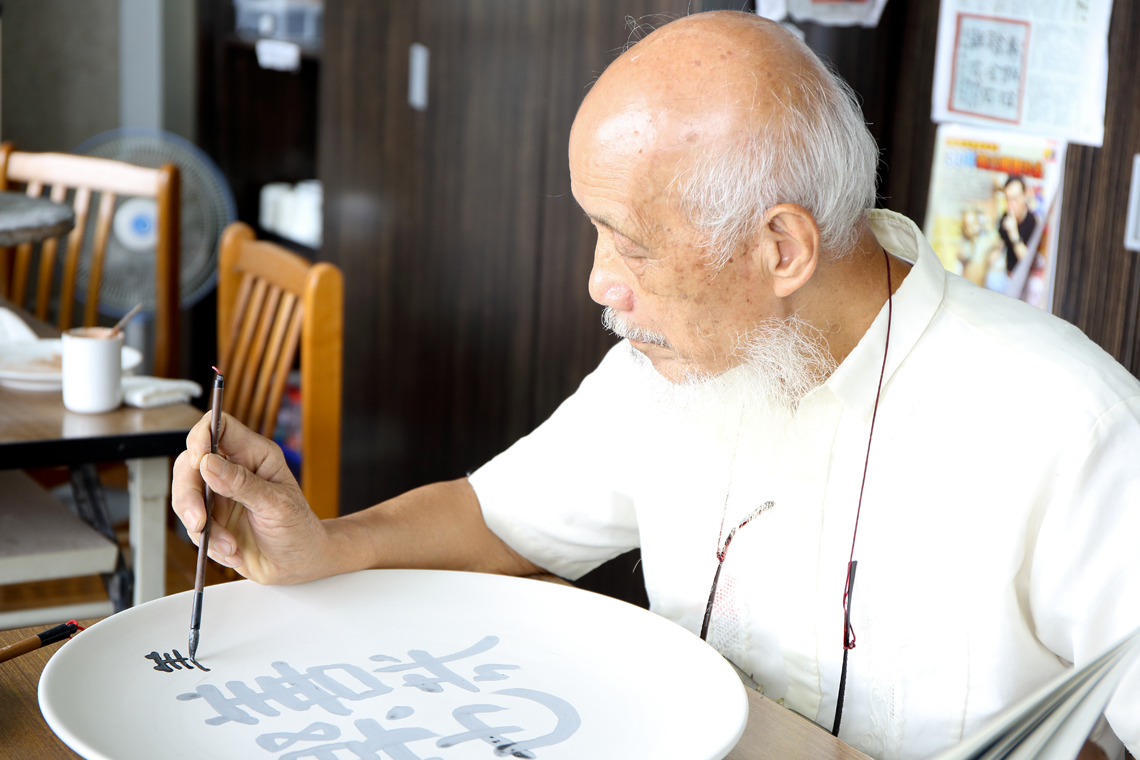鄭善禧

鄭善禧 1932 年出生
國立臺灣師範大學美術系畢業,1999 年自師範大學美術系教職退休。
作品獲獎無數,1997 年獲第一屆國家文化藝術基金會國家文藝獎(美術類)。
1983 年開始彩瓷創作。被譽為「文人水墨白話化」的代表,詩書畫瓷兼修外,偏好民俗畫風格的直白與自在,並融入西方速寫風格的筆法與空間感。創作從不講究佈局與章法,每一件作品皆真誠地表達對人生的真切體悟,與對常民文化的珍愛與重視,搭配直白記事的拙趣題字,展現當下生活的美感與趣味,形成獨樹一格的創作風格。
鄭善禧創作啟蒙於庶民生活環境中,幼時喜流連家鄉街坊廟宇,觀摩寺廟工匠窗櫺門牅、牆垣梁柱的雕刻書寫,從而孕育出他藝術創作中常民社會的豐富內涵。他以豐富的文人底蘊,將民俗藝術、文化、生活緊密結合,更融會貫通中西繪畫、書法的技巧,成就他詩、書、畫渾然天成、出入古今、獨成一格的現代水墨大家。
|
Cheng Shan-His was born in Longxi County, Fuzhou Province in 1932. He arrived in Taiwan in 1950 and attended the Department of Art at Tainan Teachers’ School (today’s National University of Tainan) in 1953. After graduating from the Department of Fine Arts at National Taiwan Normal University (NTNU) in 1960, he went on to teach at Taichung Teachers’ School, Taichung Teachers’ College and the NTNU Department of Fine Arts. Cheng’s artistic career has mainly focused on ink painting, receiving first place in the Chinese Painting category of the Provincial Teachers Art Exhibition in 1965, 1966, 1968 and 1969, followed by his first solo exhibition (in 1969). Cheng also received first place in the Chinese Painting category at the Taiwan Provincial Fine Art Exhibition in 1965 and 1967, second place in the Chinese Painting category of the Provincial Teachers Art Exhibition in 1967 and was a recipient of the Chinese Painting Prize at the 9th Art and Culture Awards organized by the Chinese Writer's & Artist's Association in 1968. Cheng Shanhsi is widely recognized as a proponent of the “Colloquialization of literati ink painting” and is not only adept at poetry, calligraphy and painting but also a master of the directness and freedom that define folk painting style. In this context, his paintings have their own inimical style, one that does not over focus on composition and presentation but rather offers a window into daily life and showcases the aesthetic beauty and appeal of life in that moment. The intimacy of Cheng Shan-His’s works comes from the freedom and joy inherent in “The wonderful boisterous beating of gongs and drums” that is such an integral part of life. Viewing the artist’s paintings, calligraphy or ceramic works is akin to regaling in the amazing diversity and beauty life has to offer. On a deeper level, each calligraphy and painting work or decorative ceramic piece gives voice to Cheng’s understanding of life and living, while demonstrating his love for the inherent vitality of popular culture. However, what drives Cheng Shan-His as an artist is his desire to pass on and imbue with renewed vitality the essential spirit of an ancient culture and heritage. |
